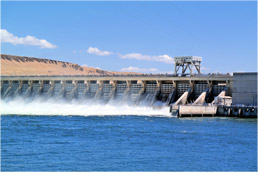Municipal water – potable and wastewater

Minimizing fouling potential and the formation of scale, and cleaning membranes to maximize membrane life using NSF-approved products, helps municipalities provide high quality drinking water for their customers.
Drinking water systems are designed using RO/MF/UF membranes for a variety of reasons, including reduction of total dissolved solids, specific contaminants (arsenic, nitrates, sodium), and organics. Membrane technology is also used to improve the color, taste and odor of drinking water. With more stringent treated water quality requirements, and ever-growing water resources, membranes will play an increasing role in supporting the delivery of clean, safe drinking water. One exciting application of membranes is direct and indirect reuse of water for drinking.

Our antiscalant and cleaning chemicals designed for wastewater applications are proven to reduce scale formation, and effectively remove foulants during CIP, in some of the toughest environments.
Throughout the world, availability of clean water is a growing concern. As freshwater resources are taxed to their limits, technology providers and operating entities are pursuing improved ways to apply membranes in the treatment of municipal wastewater for reuse applications. The levels of both organic and inorganic contaminants in wastewater differ significantly from feedwater that operators have grown used to treating. The increasing role of membranes in reuse applications brings greater demand for technologies, including chemistry, to reduce the potential for fouling and scaling.





